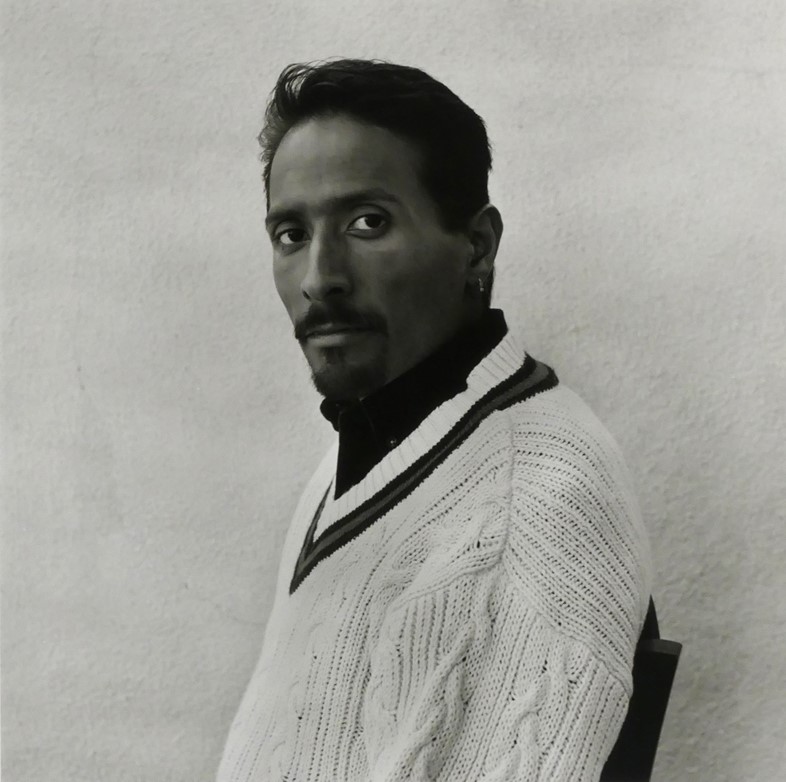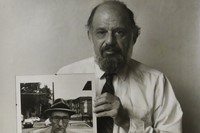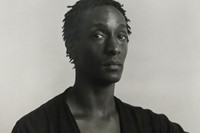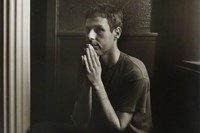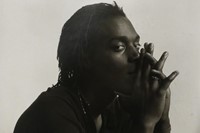On display in New York from tomorrow, Robert Giard’s portraits capture Sylvia Rivera, Quentin Crisp, Allen Ginsberg and Gertrude Stein, among many others
In 1985, Robert Giard (1939-2002) went to see The Normal Heart – Larry Kramer’s largely autobiographical play about the rise of the AIDS crisis. The set was austere. Newspaper headlines, statistics, and the names of those who had died were painted on the walls of The Public Theater.
“The fact that we knew so many of those people was deeply moving and motivating,” remembers Jonathan Silin, Giard’s life partner, co-president of the Robert Giard Foundation, and executor of the Robert Giard Estate.
Inspired, Giard set forth on a journey to photograph LGBTQ writers, artists and activists across the United States, creating over 600 portraits between 1985 and 2002. Giard’s sitters include Stonewall veterans Stormé DeLarverie and Sylvia Rivera, Samuel R. Delany, Edward Albee, Edmund White, Eileen Myles, Quentin Crisp, Allen Ginsberg, Jacqueline Woodson, and Gertrude Stein, among many others.
A new exhibition, Particular Voices: Photographs of LGBTQ Writers, Artists and Activists, 1980s – 90s, presents a selection of 53 portraits from Giard’s archive, curated to illustrate the photographer’s inclusive spirit, inquisitive mind, and generous heart.
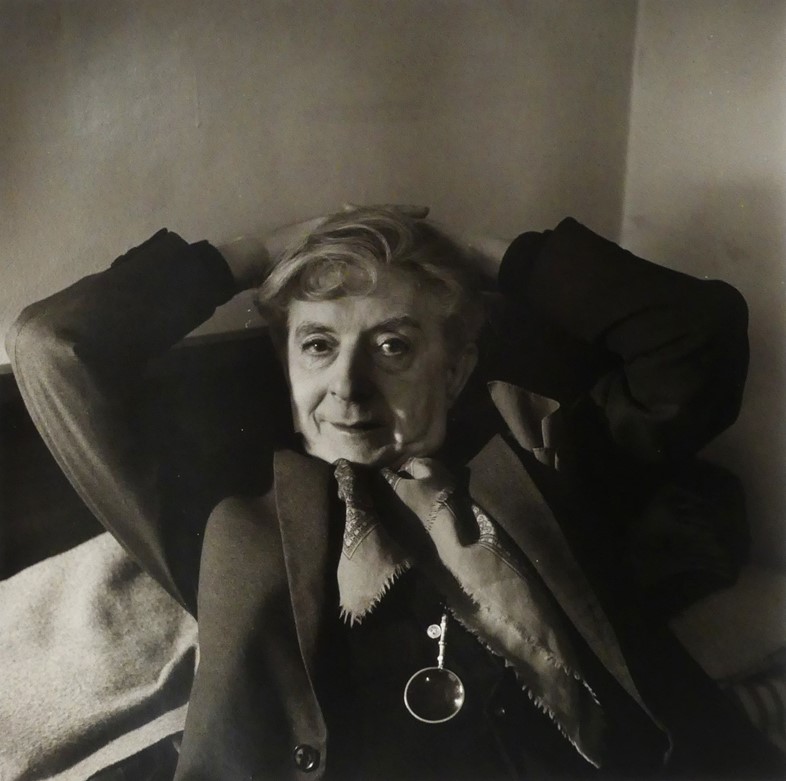
“One of the writers once said of Bob that he was a ‘natural psychologist’,” says Silin. “He had a way of making relationships with people from all walks of life. Bob always read a piece of the writer’s work before he went to photograph them so when he walked into a writer’s house, he was immediately able to begin a conversation about the writer’s work.”
The project, like Giard, had humble roots. Hailing from a working-class community in Hartford, Connecticut, Giard understood what it took to make your own way in the world. After graduating from Yale with a BA in English Literature, Giard worked as a teacher and developed a tremendous respect for writers of all stripes. Whether playwrights, poets, performance artists, journalists, historians, or novelists, Giard embraced emerging and established writers in equal measure.
Poet and essayist Michael Klein remembers Giard from his youth, when he and his twin brother attended New Lincoln School in New York City. “Robert Giard was my brother’s teacher. He had a presence but it was very gentle. He was a deep thinker, and very sensitive, very quiet. And yet he had a wonderful sense of humour. I remember him laughing a lot. He had a very light way of being in the world.”
Years later, Klein was living in a Brooklyn loft and performing as a singer-songwriter in a club, which earned him a write up in Christopher Street magazine. “I got a postcard from Robert Giard saying he had seen the article and he was so happy to see the fact that I had joined the tribe and he basically came out in the postcard!” Klein says.
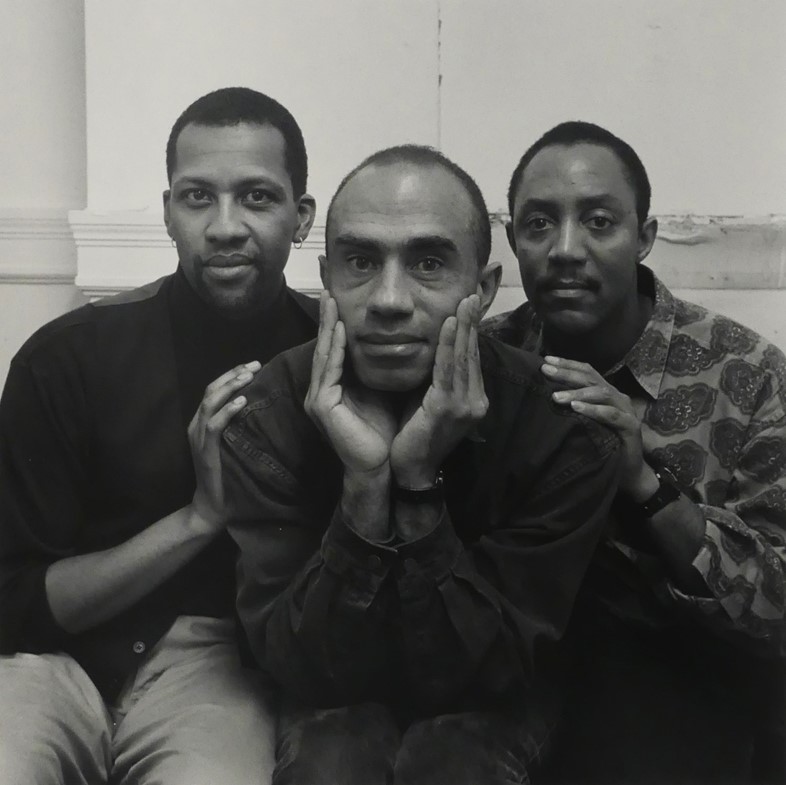
They did the session at Klein’s loft. “I asked Bob if it would be alright if I closed my eyes, which in a photograph is a risky thing to do. I think he only took one or two shots, I don’t remember him going through a lot of takes. And that was it.”
Giard’s precision with his subject was made possible by the preparatory work he made for his sessions. “As a photographer, he was both exceptionally modest and he had a tremendous sense of the historical significance of the work he was doing,” Silin says. “He kept every piece of communication with every author. You don’t keep those kinds of records unless you have a sense the project is going to have meaning far beyond your life and reputation.”
In 2004, the Beinecke Rare Book & Manuscript Library at Yale acquired the estate, ensuring the preservation of this powerful chapter of LGBTQ history. Giard self-funded the entire project, using referrals to enter into communities he might not otherwise encounter.
Colombian-American novelist and poet Jaime Manrique remembers Giard visiting him in Sag Harbor one summer for the shoot. “I told him, ‘Bob, I will be happy to sit for you but I get bored being photographed. As you photograph me you tell me your story’,” Manrique says. “He started telling me the story of his life and taking the photograph. Then I wrote down what he told me and I made it into a poem and published it later, just his words.”
In Portrait of Bob Giard Manrique renders the photographer with the hand of a poet, capturing the artist’s spirit in his verse: “You’ve heard of Horace’s / golden mean—the middle path? / …That’s me. You could say / I’m a temperate kind of guy. / Everything in moderation. / I’m not slaphappy / But I’m content with my life. / I love what I do. / I may not have a lot of money / A lot of material things / Yet, I live in a beautiful place / Though I don’t even own a car. / On sunny days, I bike down / to the beach for lunch. / Life doesn’t get much better than that.”
Particular Voices: Photographs of LGBTQ Writers, Artists and Activists, 1980s – 90s is on view at Daniel Cooney Fine Art (June 6 – July 26, 2019).
